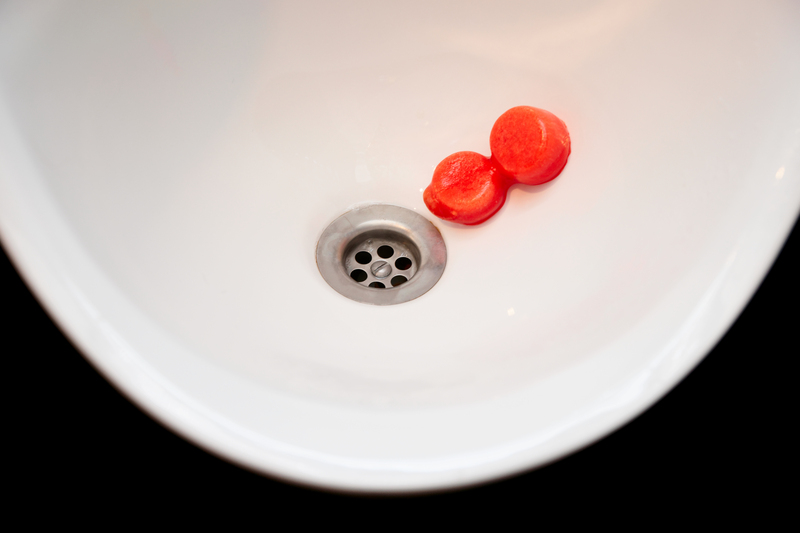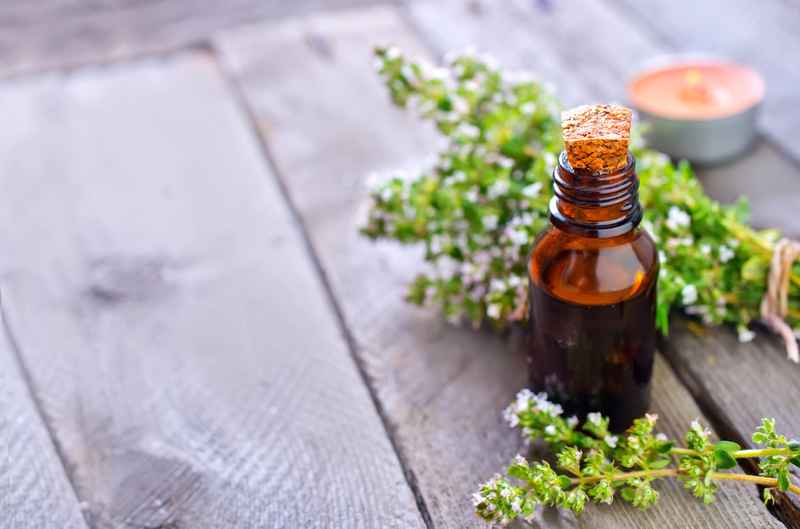Master the Art of Removing the Damp Smell from Fabrics
Posted on 22/08/2025
Master the Art of Removing the Damp Smell from Fabrics
Are you frustrated by the persistent damp odor in fabrics that just won't go away? Whether it's your favorite sweater, a cherished quilt, or even your living room curtains, nothing is worse than the musty smell that seems to cling to your textiles. Thankfully, it's possible to eliminate these odors and enjoy fresh-smelling fabrics again. In this comprehensive guide, you will master the art of removing the damp smell from fabrics using tried-and-tested techniques, expert advice, and preventative tips. Say goodbye to that lingering musty odor and welcome a clean, inviting scent back to your home!

Understanding the Source: What Causes Damp Smells in Fabrics?
Before you can effectively get rid of bad odors, it helps to know why they appear. The damp smell in fabrics--often described as "musty"--is most commonly a result of:
- Mildew and mold growth from exposure to moisture and lack of air circulation
- Improper laundering or drying of clothing, towels, bedding, or upholstery
- Storage in humid or unventilated areas such as damp closets or basements
- Spills or sweating on fabrics, especially if not cleaned quickly
The stubborn damp odor in textiles is a sign that bacteria, mold, or mildew have taken hold. Not only is this unpleasant, but it can also lead to health issues such as allergies or respiratory irritation. Learning how to remove the musty smell from fabric is not only a question of comfort but also of wellbeing.
Essential Preparation: What You'll Need
To remove mildew smell from fabrics effectively, gather the following supplies:
- White vinegar - a natural deodorizer and mold killer
- Baking soda - neutralizes acids and absorbs odors
- Lemon juice - for natural freshening and mild bleaching
- Essential oils (optional) - lavender, eucalyptus, or tea tree for added freshness
- Laundry detergent - preferably fragrance-free and anti-bacterial
- A washing machine or large basin for hand-washing
- A sunny spot or well-ventilated drying area
Now, let's move step-by-step to remove that stubborn musty fabric odor for good!
Step-by-Step Guide: Removing the Damp Smell from Fabrics
Step 1: Assess the Severity of the Odor
Determine how strong the damp or musty smell is. If it's mild, a regular wash might suffice. For stubborn or deeply embedded odors, more intensive methods are necessary. If fabrics appear moldy (visible black or green spots), consider professional cleaning for delicate or valuable items.
Step 2: Pre-Treat with Vinegar or Baking Soda
- For Washing Machines: Add one cup of white vinegar to the detergent dispenser or directly into the drum and run an empty hot cycle. Then, launder your fabrics as usual.
- For Hand-Washing: Fill a basin with hot water, add one cup of vinegar and soak fabrics for 30-60 minutes. Rinse thoroughly.
- For extra odor elimination, sprinkle baking soda over the fabric or add half a cup to the wash cycle.
Pro Tip: Avoid mixing vinegar and baking soda at the same time--they neutralize each other. Use them in separate wash cycles for maximum effectiveness.
Step 3: Wash with Extra Care
- Use a strong, fragrance-free detergent and select the hottest water temperature suitable for the fabric (always check the care label!).
- Add a scoop of baking soda or a half-cup of vinegar during the rinse cycle for additional odor-fighting power.
- If laundry allows, add a few drops of essential oils (like tea tree or lavender) to the final rinse for a fresh scent and extra anti-microbial action.
Step 4: Dry Thoroughly
Never store damp fabrics! This is key to preventing damp smells from returning.
- Sun-dry outdoors whenever possible. Sunlight naturally kills bacteria, mold, and mildew, while providing a fresh scent.
- Indoors, use a drying rack in a well-ventilated, heated area. Fans or dehumidifiers can help speed up drying.
If you suspect a lingering smell, repeat the washing and sun-drying steps--sometimes it takes two or three cycles for heavily affected fabrics.
Tackling Tough Odors: Extra Tips for Removing Persistent Damp Smells
Activated Charcoal and Odor Absorbers
Activated charcoal is a highly effective odour neutralizer for fabrics. Simply place fabric-safe odor absorber bags in your drawer, closet, or storage box. Over a few days, the charcoal will absorb any remaining damp odor.
Lemon and Salt Paste
For spot treatment (e.g., on upholstery or small items):
- Make a paste from fresh lemon juice and salt.
- Rub gently onto the affected fabric area, leave for 15-20 minutes, then rinse or wipe clean.
- This is especially great for stubborn musty odors on fabric shoes, hats, or upholstery.
Vinegar and Steam Clean
- For large, non-machine-washable fabrics (like sofas or carpets), rent or use a steam cleaner that allows for a vinegar or essential oil rinse.
- This helps kill spores and refresh the textile's scent without oversaturating the fabric.
Preventing the Return of Damp & Musty Smells in Fabrics
Now that your fabrics are fresh, learn how to keep damp odors from coming back!
Store Fabrics the Right Way
- Always dry fabrics completely before folding and storing. Even slight humidity can lead to a return of musty smells.
- Use silica gel packs or moisture-absorbing sachets in drawers and storage boxes.
- Store fabrics in a cool, dry, well-ventilated space. If using plastic bins, ensure a small gap so air can circulate.
Regular Cleaning and Maintenance
- Wash and air large items (such as curtains or duvets) several times a year, even if they don't appear dirty.
- Spritz fabrics with a weak vinegar-water solution (1:4 ratio) every few weeks to maintain freshness.
- Keep closets and laundry rooms dry--install a dehumidifier or air purifier if you notice excess humidity.
Frequently Asked Questions: Dealing with Fabric Odors
Can I use scented sprays or perfumes to mask the damp smell?
While fabric freshener sprays can provide a temporary cover, they don't actually remove the underlying problem. In fact, covering up that musty fabric odor often makes it harder to detect if mildew or mold are lingering. Always address the source before using fragrances!
What's the best way to treat delicate or vintage fabrics?
Hand-washing is safest! Spot test any deodorizing method (such as vinegar or baking soda) on an inconspicuous area first. Avoid scrubbing--use gentle submersion in cool water with a mild detergent, then air dry out of direct sunlight to prevent fading.
Is it safe to use bleach to remove damp smells?
Bleach is very effective at killing mold and mildew, but it can damage colored or delicate fabrics. Use only on whites and heavily soiled linens, and always rinse thoroughly. For routine cleaning, gentler alternatives like vinegar and baking soda are preferred.
How do I prevent damp or musty smells after storing seasonal textiles?
- Launder and dry items thoroughly before packing away
- Add charcoal deodorizers, silica gel sachets, or cedarwood chips to storage containers
- Store in sealed, moisture-proof containers if possible
- Air out storage areas regularly to prevent humidity buildup
Bonus: DIY Freshening Sprays for Everyday Use
Between washes, you can keep fabric odors at bay with a simple homemade spray:
- Mix 1 cup distilled water + 2 tablespoons white vinegar + 10 drops lavender or citrus essential oil in a spray bottle
- Lightly mist fabrics (curtains, bedding, furniture) as needed
- Allow to air dry; avoid saturating upholstery or non-washable textiles
This spray helps neutralize odors, add a pleasant scent, and discourage mildew growth between deep cleans.
The Science: How Vinegar, Baking Soda, and Sunlight Beat Musty Smells
Ever wondered why vinegar and baking soda work so well? Here's a deeper look:
- Vinegar: The acetic acid in vinegar breaks down and dissolves mildew, bacteria, and mineral deposits that trap odors. It also acts as a gentle fabric softener.
- Baking Soda: This mild alkaline powder neutralizes acids produced by bacteria and absorbs odors from fabric fibers.
- Sunlight: UV rays from the sun kill mold, mildew, and bacteria, while the warmth helps expedite drying. Sun-dried fabrics often smell significantly fresher!
For the ultimate damp smell remover for fabrics, combining all three methods is the gold standard!
When to Call a Professional
Sometimes, the musty smell persists despite your best efforts. If you notice ongoing odors, visible mold, or suspect water damage within upholstery or carpets, professional cleaning may be necessary. Certified restoration or dry cleaning services have specialized equipment for deep decontamination and can prevent the spread of mold spores.
Don't ignore persistent damp or mildew smells--addressing the root cause protects both your fabrics and your health.

Takeaway: Enjoy Fresh, Inviting Fabrics All Year Round
Mastering the art of removing the damp smell from fabrics is a game-changer for any household. With a little knowledge, patience, and the right supplies, you can banish persistent musty odors and restore freshness to your clothes, textiles, and soft furnishings. Remember, the key is prompt action, regular care, and attention to storage conditions. Return to these steps whenever needed, share them with friends, and enjoy the feeling of truly clean, rejuvenated fabrics every day!
Share Your Success Stories!
Have you discovered a new way to eliminate the damp smell from fabrics? Share your tips and stories in the comments below--your insights may help someone else master this essential household art!



